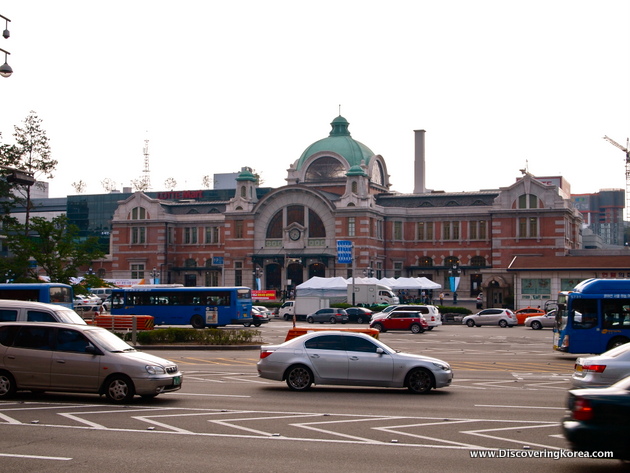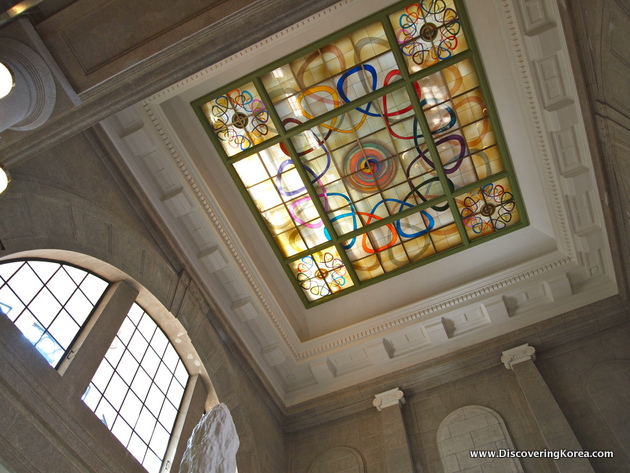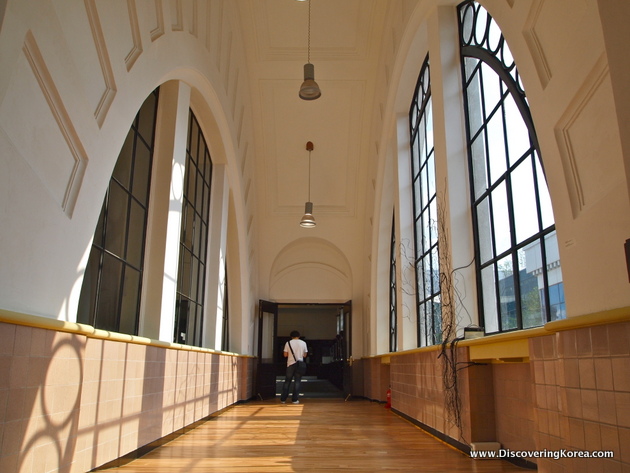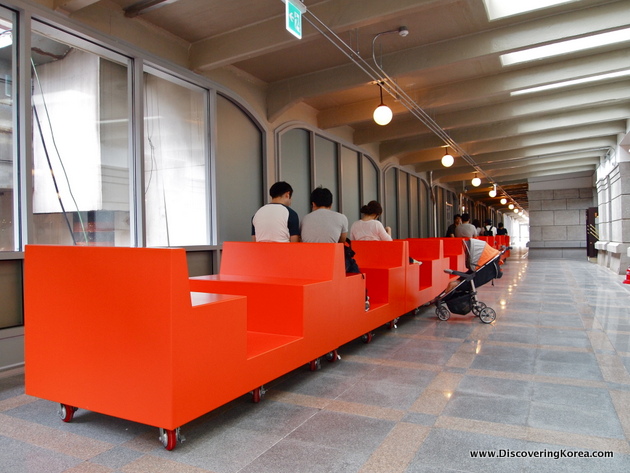“It darts like thunder and lightning and leaps like wind and rain,” wrote Kim Ki-su in an 1877 memo recounting his experience aboard a Japanese train. The Korean envoy marveled, “Inside the car it doesn’t move a bit, but outside scenes of mountains, houses and people flashed fast.”

In 1899, train service came to Korea. The Mogal linked the port of Incheon to Seoul’s Noryangjin Station via the Gyeongin rail line.
By 1905, tracks stretched from Pyongyang to Busan and in 1925, the South Manchuria Railway Company completed a mixed Renaissance and Baroque-inspired building that featured a Byzantine-style central dome.
Reports suggest that the architect, Tsukamoto Yasushi, was influenced by the station’s Swiss and Dutch contemporaries.

For nearly eighty years, Seoul Station served the city until 2004, when a new facility was built to accommodate Korea’s KTX bullet train.
In the ensuing years, locals complained that the once proud and bustling station had been abandoned and felt like a neighborhood ghost. And despite its protected status as one of Seoul’s best examples of colonial architecture, its future was unclear.
In 2009, the Ministry of Culture, Sports and Tourism partnered with the state-run Korea Craft and Design Foundation to create Culture Station Seoul 284.
The two-year, 21.3 billion won ($20 million) project has restored the building in order to recast it as a cultural space. In the six months leading up to the grand re-opening in March 2012, the multi-disciplinary project, “Countdown” features the work of dozens of Korean contemporary artists.

Among them is Joohyun Kim, whose “Warping-Web” installation harkens back to the station’s derelict years. From the ceiling of a narrow, second floor corridor hang four illuminated, metal cobwebs.
A more optimistic note is struck in the Central Hall, where Gim Hong-sok’s “Fountain no. 7” rises precipitously from the floor, reflecting a relentless striving toward the future.
“Countdown” also features biweekly rock concerts and video art pieces that radiate from the Seoul Square Media Canvas three nights a week.
The temporary art exhibition is fitting for a venue accustomed to fleeting moments.
Over the decades, Seoul Station witnessed countless emotional moments, be it the forced departure of Crown Prince Euimin and Princess Deokhye by Japanese officials or the millions of young people who came to Seoul from the countryside during Korea’s boom years.

In the words of station spokesman Oh Sae-Won, the building has borne “silent witness” to Korea’s modern history of colonization, war, democratization and economic growth.
While the building’s green Terrazzo staircase and ornate wood paneling were restored, some damage was left in-tact as reminders of Korea’s past.
For example, parts of the wall above the ticket windows bear stains from old train schedules. More menacing are the bullet holes from the Korean War that pockmark the wall behind the main desk.
What’s more, the restoration effort added new elements to the station campus. For example, the Central Hall’s stained glass ceiling was replaced with a colorful motif by Father Jo Gwan-ho that’s inspired by a 5,000-year-old Korean folk dance, ganggangsullae.

Outside is an unconventional statue of a grenade-wielding Gang Ugyu, who was hanged after his unsuccessful attempt to assassinate the Japanese Governor-General of Korea at a train station in 1919.
Collectively, Seoul Station’s restoration seems to fit with “Countdown” Artistic Director Sung Won Kim’s larger vision to “offer unpredictable encounters and unique journeys through the past, present and future.”
Recently, the Airport Railroad Express (A’REX) completed its link from Incheon International Airport to Seoul Station. As a result, the number of foreign visitors to Seoul Station has risen dramatically.
Those journeys, however, will inevitably extend beyond the station itself. A huge transportation and business development is slated for completion in 2014.

Glowing reviews of the station during its mini re-opening have officials cautiously optimistic about the grand event next March.
And yet, despite the fact that the station’s second act has yet to formally begin, city leaders are already considering a third.
Seoul Station’s restoration left its original functions in tact, in the event that a thaw in South-North Korean tension could connect Seoul with the rest of Asia and Europe, this time by rail.
For Your Information…
| Open: | Oct.-Mar.: 11:00-19:00 (until 20:00 Sat-Sun), Apr.-Sep.: 11:00-20:00 (until 21:00 Sat-Sun), Closed Mon., Jan. 1st & Chuseok |
| Admission Price: | ₩2,000; ₩1,000 for disabled, children 6 and under |
| Address: | Seoul, Jung-gu Tongil-ro 1 |
| Directions: | Seoul Station (#133/#426/#P313/ #A01) on Lines 1, 4, AREX and Gyeonghui, Exit 2 |
| Phone: | 02-3407-3500 |
| Website: | Official Site |
About Matt Kelley
Matt Kelly is native of the US Pacific Northwest and is half-Korean by ethnicity. He lived in Korea for five years and has written hundreds of travel guides for Wallpaper, TimeOut, the Boston Globe and Seoul Magazine and was a host for several different variety shows on Korean radio and television.
